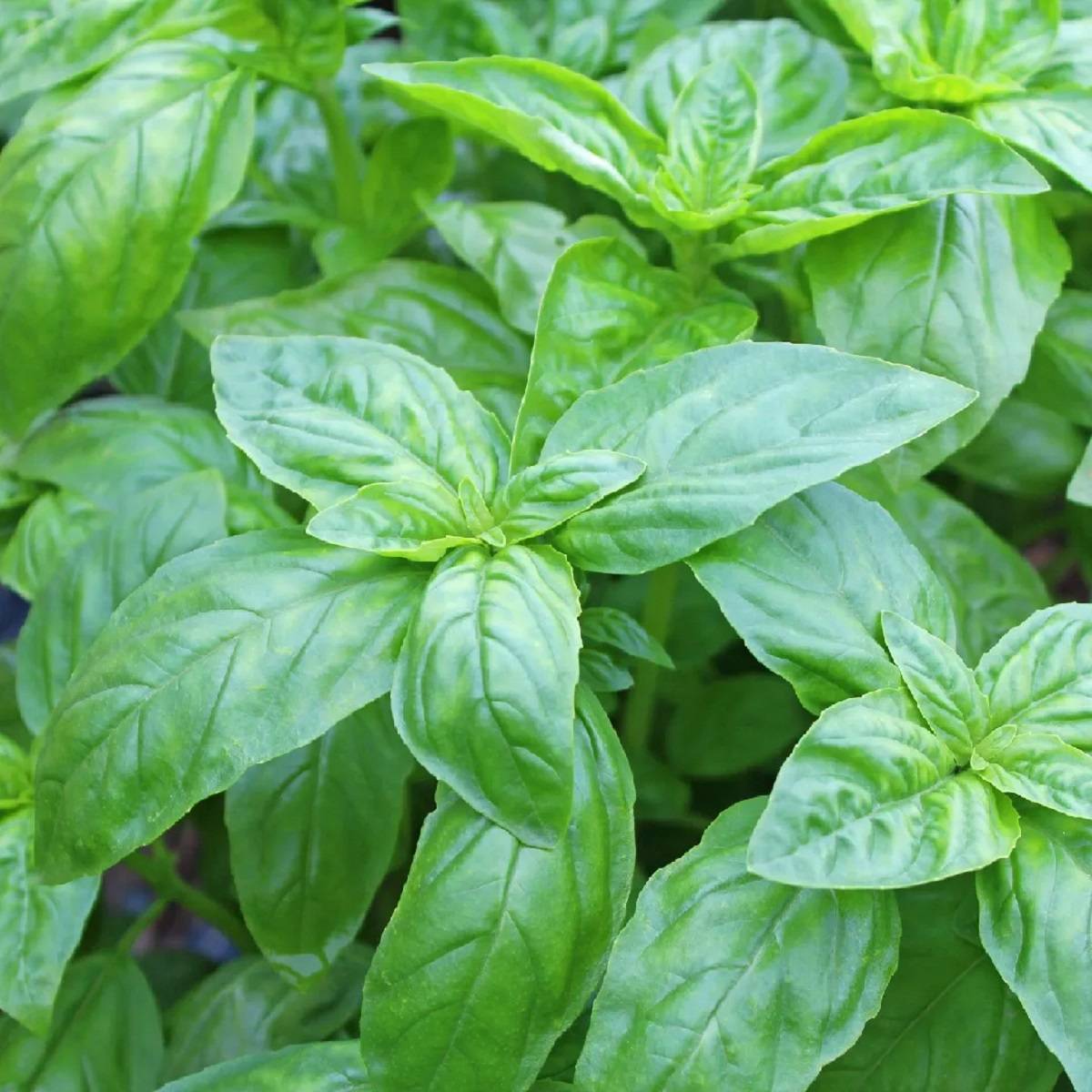
Basil is a flavourful, adaptable and incredibly well-liked herb. It grows well in warm climates, is simple to cultivate, and tastes great. It is a lovely accent to a variety of gourmet meals and is almost exclusively associated with salads and pasta served throughout the summer. It thrives in both in-ground and container gardening. Basil tastes much better than it smells.
Basil Description
|
Common Name |
Sweet basil |
|
Botanical Name |
Ocimum basilicum |
|
Family |
Mint |
|
Plant Type |
Perennial or annual herb |
|
Size |
18–24 in. tall and wide |
|
Sun Exposure |
Full sun (likes some shade in very hot climates) |
|
Soil Type |
Somewhat rich soil |
|
5.1–8.5 (acidic to alkaline) |
|
|
Bloom Time |
June to frost |
Basil Planting Season
Basil can be planted as early as two weeks after the last frost when the soil temperature is between 50° and 70° F — the warmer, the better. It can also be sown in the summer.
Locations
Put basil in a location with lots of sunlight. The recommended amount of sunlight is between six and eight hours.
Propagating Basil from Roots
Basil can be readily multiplied by cutting a little piece from an established plant. Put the cutting simply in a transparent glass of water with the cut side facing up, and place it somewhere sunny. Root growth will rapidly occur as long as the water is changed every other day. The basil is ready to be planted when the roots are at least 2 inches long.
Growing In Containers
Use a fairly large pot when planting basil in a container. A developing basil plant can suffer if a little container of soil is dried out during a hot summer day. The plant will require watering more often in a smaller container.
Soil
Basil prefers rich, wet soil that drains well and has a pH between 6 and 7. Compost, cottonseed meal, or blood meal can be used to enrich the soil with a sufficient amount of organic nutrients.
Spacing
If planting multiple basil plants, place them approximately 12 to 18 inches apart to allow for growth.
Irrigation
Large beds or planting boxes can only require watering every three to four days or so. You might need to modify how frequently you irrigate depending on the hot or rainy days throughout the summer.
Fertilizer
Basil should be routinely picked, so fertilization isn't something you need to worry about too much.
Harvesting and Storing of Basil
One of the best things about basil is that there is no true, set harvest season; you can just pick what you need when you need it. The wonderful thing is that basil plants produce more the more you harvest. Harvesting often will maintain full, rounded plants. Harvest the plant before it "bolts," or goes to seed. The leaves of basil can taste bitter as it goes to seed.
How to Harvest?
When the basil plant is between 6 and 8 inches tall, you may start harvesting it. Snip as much basil as you like just above the intersection of two larger leaves. To guarantee uniform growth, harvest the entire plant in an even circle.
How to Store for Later Use?
You can use basil straight from the plant. Additionally, it can be kept for later use. Basil leaves may be kept fresh for a long time by drying, freezing, or preserving them in vinegar. Oil can also be used to provide flavour. Naturally, don't forget to make pesto as well. If kept in the refrigerator, fresh basil leaves will keep in water for a few days.
Care and management
Tip 1: Irrigate frequently and consistently. Maintain soil moisture for optimum development. For optimal outcomes, drink water first thing in the morning. Mulch around the plant might assist keep moisture inside if you live in an area that gets more heat or are experiencing a heat wave.
Tip 2: Harvest frequently to promote fresh growth.
Tip 3: When a basil plant begins to blossom, the basil leaves lose flavour and the plant stops growing. The delicious basil flavour will reappear in a few days after the blooms are removed, though.
















